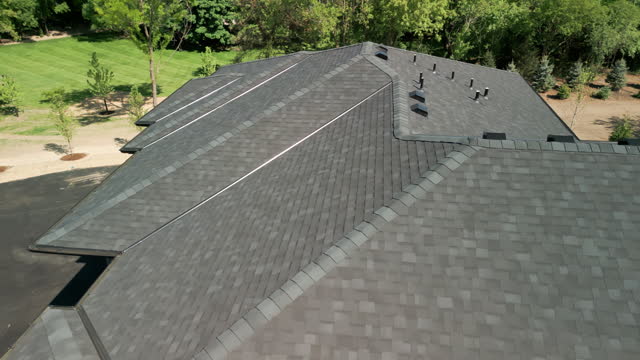Roof replacement is a common necessity for homeowners, especially as roofs age and wear out over time. When considering a roof replacement, many factors come into play, such as cost, durability, and aesthetics. However, one important factor that is often overlooked is the environmental impact of the materials used in the replacement process.
The environmental impact of roof replacement materials can be significant, depending on the type of material chosen. Traditional roofing materials such as asphalt shingles are widely used due to their affordability and ease of installation. However, these materials have a negative impact on the environment due to their production process and disposal.
Asphalt shingles are made from petroleum-based products that require a significant amount of energy to produce. The extraction and refining of oil to create asphalt shingles contribute to air pollution and greenhouse gas emissions. Additionally, when asphalt shingles are disposed of in landfills at the end of their lifespan, they do not biodegrade easily and can leach harmful chemicals into the soil and waterways.
Another commonly used Rock Central Roofing, which has gained popularity in recent years due to its durability and energy efficiency. Metal roofs are typically made from recycled materials such as aluminum or steel, making them a more sustainable option compared to asphalt shingles. However, the production process of metal roofing still requires energy and resources.
Wood shakes or shingles are another popular choice for homeowners looking for a more natural aesthetic for their roof. While wood is a renewable resource, its harvesting can have negative impacts on forests if not done sustainably. Clear-cutting forests for wood shake production can lead to deforestation and loss of habitat for wildlife.
One environmentally friendly alternative to traditional roofing materials is green roofs or living roofs. These roofs feature vegetation planted on top of a waterproof membrane, providing insulation benefits while reducing stormwater runoff and improving air quality. Green roofs also help mitigate urban heat island effects by absorbing heat instead of reflecting it back into the atmosphere like traditional roofing materials.
When considering a roof replacement project, it’s essential for homeowners to weigh the environmental impact of different roofing materials alongside other factors such as cost and durability. Choosing sustainable options like metal roofing or green roofs can help reduce your carbon footprint while increasing your home’s energy efficiency.
In conclusion, understanding the environmental impact of roof replacement materials is crucial in making informed decisions that benefit both your home and the planet. By choosing eco-friendly options when replacing your roof, you can contribute towards creating a more sustainable future for generations to come.
Rock Central Roofing
2002 Sunny Trail Drive, Georgetown, TX, 78626
512-883-0952

